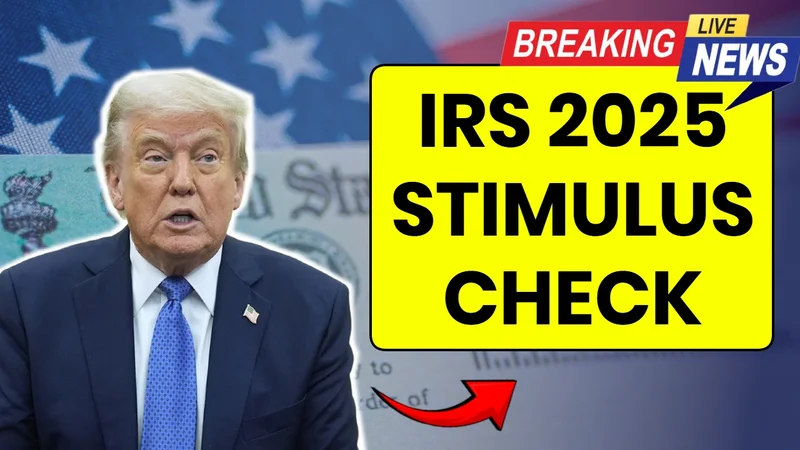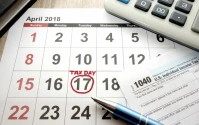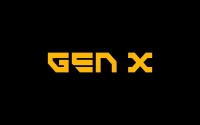Forget the Fourth Stimulus Check. We're Building Something Smarter.
Let's be honest. The internet is buzzing with the ghost of stimulus past, with many wondering, Are we getting a stimulus check in 2025? IRS tax refund status tracker, rebate eligibility. You’ve seen the headlines, the sketchy social media posts promising a new $2,000 check from the government. It feels like a phantom limb, an echo from the chaotic days of the pandemic when money seemed to materialize in our bank accounts overnight. Most of these rumors are just that—rumors, or worse, outright scams designed to prey on hope. The deadline to claim the last of the COVID-era checks, the final $1,400 payment, officially closed on April 15, 2025. That chapter is over.
But what if I told you that focusing on a "fourth stimulus check" is like searching the sky for a biplane in an age of supersonic jets? We’re asking the wrong question. The real story, the one that should fill you with a sense of profound optimism, isn’t about whether we’re getting another blunt-force injection of cash. It’s about the quiet, revolutionary upgrade happening to our entire economic support system.
We are witnessing a paradigm shift. The monolithic, one-size-fits-all approach is dying. In its place, something far more intelligent, responsive, and decentralized is being born.
The Sledgehammer and the Scalpel
The three stimulus checks of the COVID era were a necessary sledgehammer. They were a massive, brute-force tool designed to stop an economy in freefall. They worked, in a way, but it was messy. It was like trying to perform surgery with a mallet. Money went where it wasn't needed and didn't go fast enough to places where it was. It was the economic equivalent of the first mass-produced automobiles: revolutionary for their time, but clunky, inefficient, and all built exactly the same. They proved we could get from point A to point B, but nobody would call them elegant.
Now, we're building the Teslas of economic relief.
Look at what’s happening at the state level. It’s a beautiful, chaotic laboratory of innovation. States like New York, Pennsylvania, and Georgia aren't waiting for a federal mandate. They’re deploying "inflation relief checks." This isn't a random number sent to everyone; it's a targeted response to a specific problem—the pain of higher sales taxes. New Jersey’s ANCHOR program is even more precise, delivering up to $1,750 in property tax relief, with different amounts for homeowners versus renters, and for seniors versus younger residents.
When I started connecting the dots between these state-level programs, I honestly just sat back in my chair, speechless. This isn't just policy; it's the beta test for a more resilient economic operating system. It’s a move from a single, massive broadcast antenna blasting the same signal to everyone, to a distributed network of smart devices, each delivering a personalized stream of support right where it's needed. They call them different things—rebates, which are technically refunds, or relief credits—but in simpler terms, it’s all about getting targeted money to specific people facing specific pressures.

This is a fundamental paradigm shift from one-size-fits-all to a dynamic, responsive system that can sense economic friction in real-time and apply lubrication exactly where it's needed—it’s the difference between flooding an entire field and using precision drip irrigation to nurture each individual plant. Are we seeing the first iteration of a system that could one day predict and preempt economic hardship before it becomes a crisis?
A Glimpse of the New Operating System
The conversation in Washington is starting to reflect this evolution, too. Proposals like Senator Hawley’s “American Worker Rebate Act” or the speculative ideas from Donald Trump about tariff rebates and “DOGE dividends” aren’t just rehashes of the old stimulus model. They are signals that the core idea—direct payments—is now a permanent tool in the economic toolkit. The debate is no longer if, but how. How do we make it smarter? How do we make it faster? How do we make it more targeted?
This opens up some truly exciting possibilities. Imagine a future where your tax refund isn't a once-a-year lump sum you wait anxiously for by tracking a cryptic IRS portal. What if it were a continuous, real-time adjustment to your financial reality, a living system that responds to your income changes month by month? Could we build a national framework that automatically triggers support to a specific region based on real-time inflation data or a sudden spike in local unemployment?
The technology to do this is already here. We live in an age of instant payments and big data. The challenge isn't technological; it's about imagination and political will.
Of course, with this level of targeting comes a huge responsibility. We must design these new systems with a focus on fairness, privacy, and accessibility. We can't build a smarter economic future that leaves the most vulnerable behind because they can't navigate a complex digital portal or don't have a stable mailing address. The goal of a smarter system must be to include more people, more effectively, not to create new barriers. The elegance of the design will be measured by its inclusivity.
So, while the internet chases the ghost of a fourth stimulus check, the real work is already underway. It’s happening in statehouses, in policy papers, and in the minds of people who are looking past the sledgehammer and starting to design the scalpel.
The System is Upgrading
Let's stop looking in the rearview mirror. The era of the clumsy, monolithic stimulus check is over, and that’s a fantastic thing. We are witnessing the birth of a decentralized, intelligent, and responsive financial support network. The online rumors aren't just about a phantom check from the past; they are the sound of a population demanding the future. And that future is already being built, not with one big check, but with a million smart ones.









